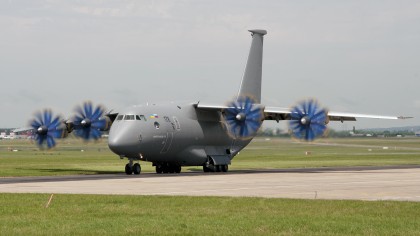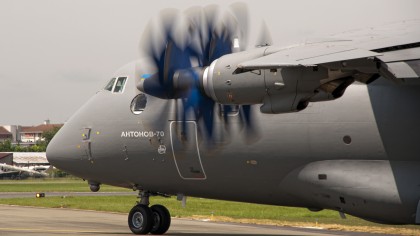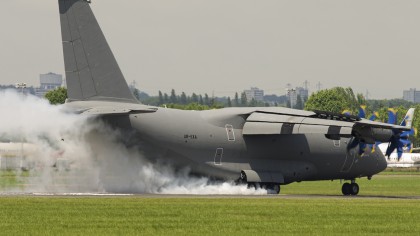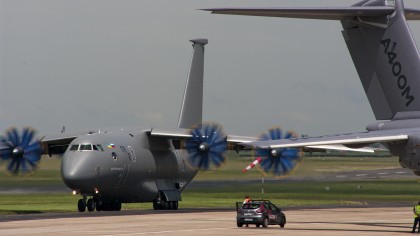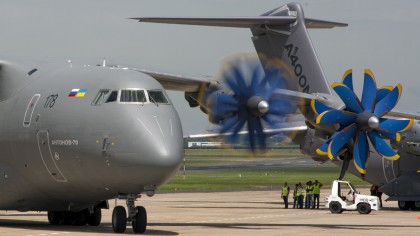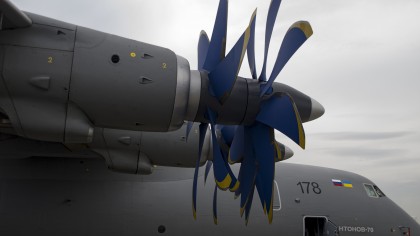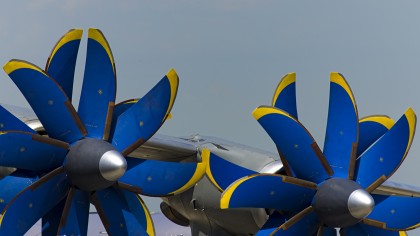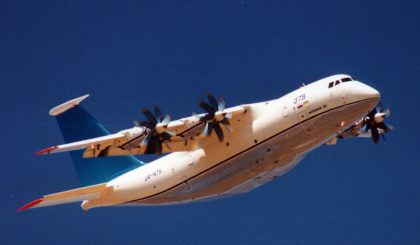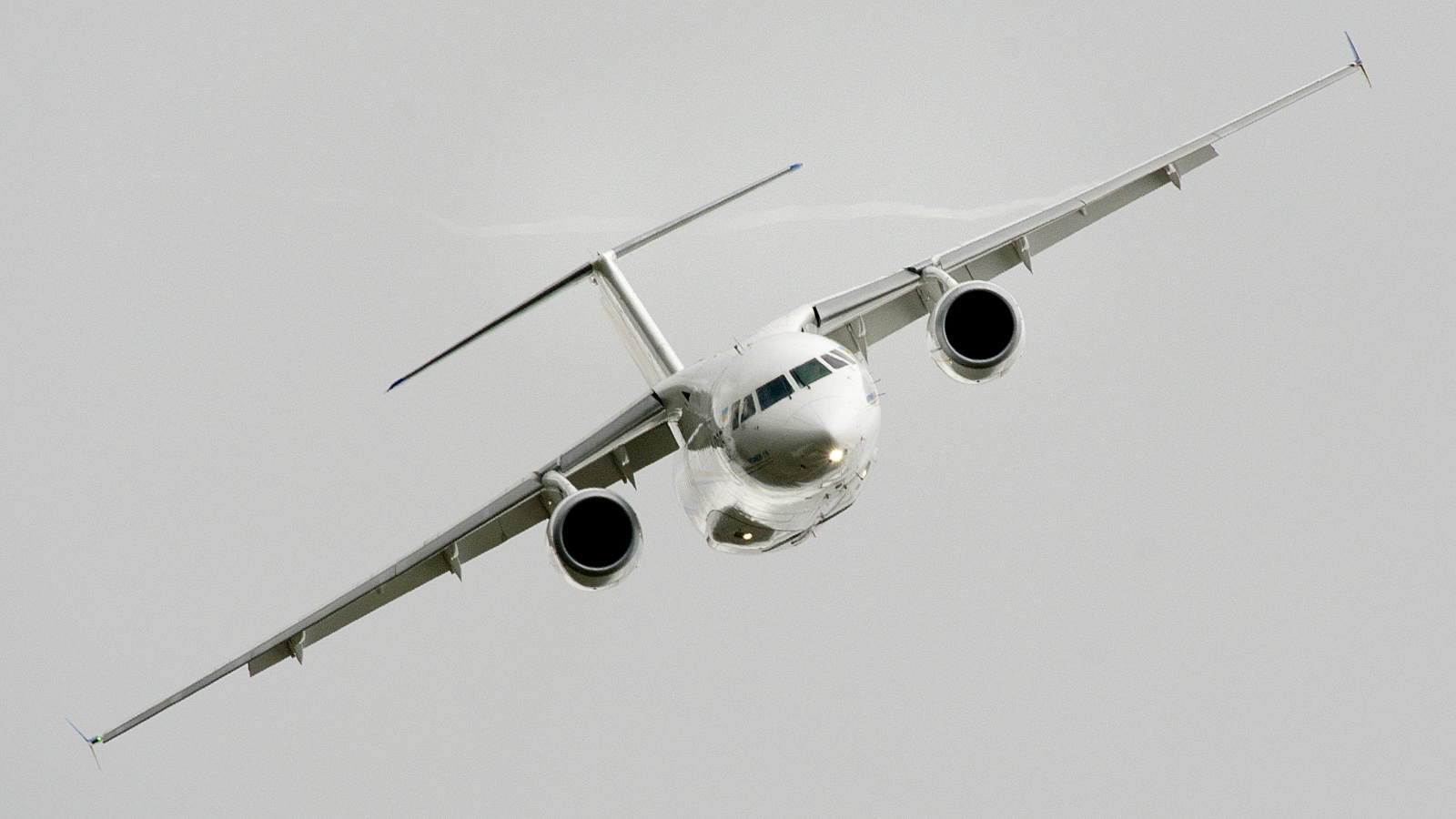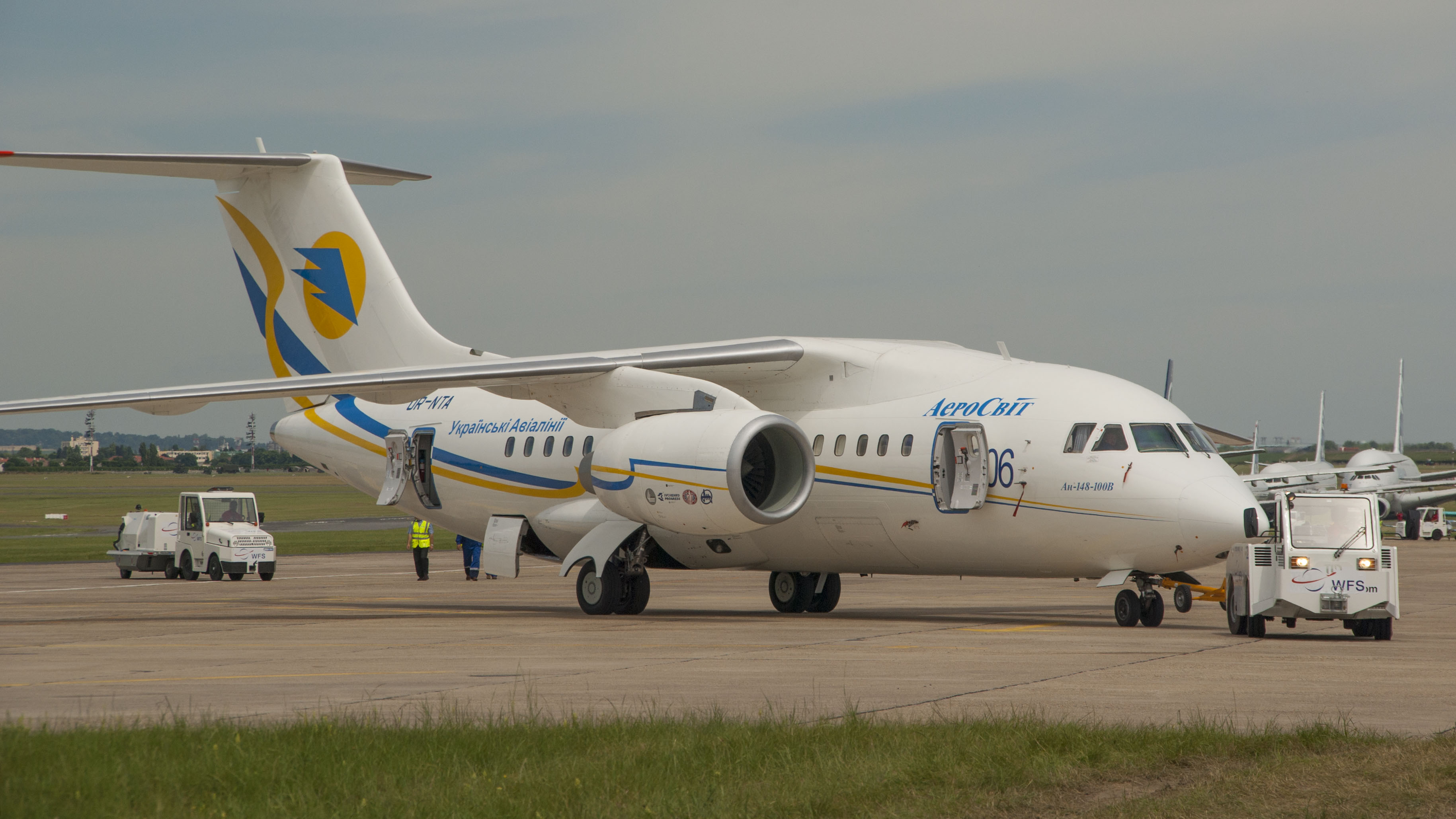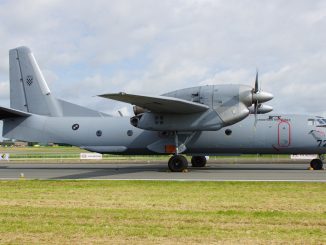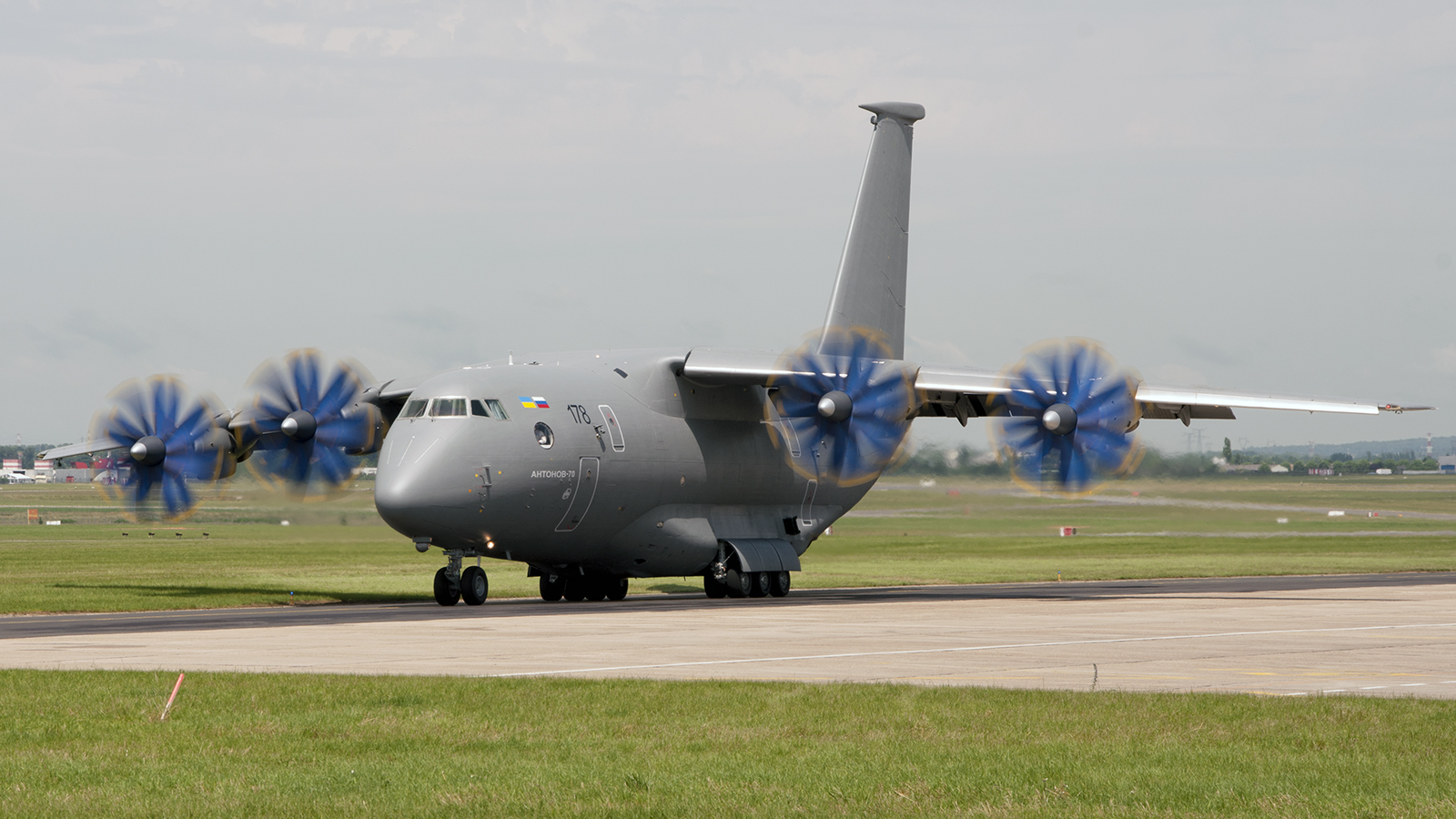
The Antonov An-70 is a four-engine short takeoff and landing tactical military medium transports, and the first large aircraft to be powered by propfan engines.
Developing nation: Ukraine.
Manufacturer/designer: AVIANT/Antonov.
Production Lines: Kiev.
Type aircraft: Heavy transport aircraft.
First flight: 16 December 1994.
Built: 2 prototypes.
The An-70 is a high-wing monoplane with four wing-mounted propfan engines, it has a full glass cockpit and fly-by-wire controls. Powered by four Progress D-27 propfan engines, each turning a pair of contra-rotating scimitar propellers.
AN-70 can perform the typical transport mission (transportation of 20 t payload at a range of 3000 km) from unpaved airfield of 600-800 m length only. There is no other airplane with such ability. Taking into account all likely possibilities it is possible to come to conclusion that the AN-70 STOL capabilities as much as twice reduce both the number of aircraft required for the mission and the cost of the operation. According to the design estimations, AN-70 can be operated from/to elevated airfields placed at altitudes up to 3000 m over sea level. In comparison with the analogues aircraft, the AN-70 can perform air dropping of cargoes and parachutists with twice less scatter and its crew can guide the aircraft to the calculated touchdown point with a pin-point accuracy.
The built-in aerial delivery system ensures autonomous loading/unloading of a wide range of cargoes and their air dropping. The onboard loading equipment consists of four overhead rail electric motor hoists and two onboard electric winches. At customer request, the aircraft can be equipped with easily removable upper deck or roller conveyer to automate container handling operations.
The first prototype was lost during its fourth flight on 10 Feb 1995 in a mid-air collision with an Antonov An-72 being used as a chase plane, the test crew of seven were killed. The aircraft proved so promising during its first three flights that Antonov decided to press on and converted the static-test prototype into a flying prototype. The second airframe took to the air only 21 months after the crash of the first one, on 8 December 1996.
General characteristics
- Crew: 4 (Two pilots, navigator and flight engineer)
- Capacity: 300 troops or 206 stretcher cases
- Payload: 47,000 kg (103,620 lb) of cargo
- Length: 40.7 m (133 ft 6 in)
- Wingspan: 44.06 m (144 ft 7 in)
- Height: 16.38 m (53 ft 9 in)
- Empty weight: 66,230 kg (146,000 lb)
- Max. takeoff weight: 145,000 kg (319,670 lb)
- Powerplant: 4 × Progress D-27 propfans, 10,350 kW (13,880 hp) each
Performance
- Maximum speed: 780 km/h (421 knots, 485 mph)
- Cruise speed: 750 km/h (405 knots, 466 mph)
- Stall speed: 113 km/h (61 knots, 70 mph)
- Range: 6,600 km or 5,000 km (3,564 nm or 2,700nm)with 20 or 35 tonnes of cargo
- Service ceiling: 12,000 m (39,370 ft)
- Rate of climb: 24.9 m/s (81.7 ft/s)
All pictures courtesy of Zijde Aviation Photo and Publishing, Rob Vogelaar / Marcel van Leeuwen
